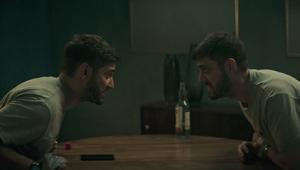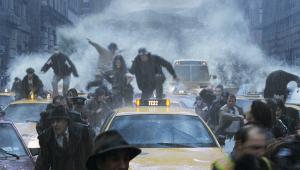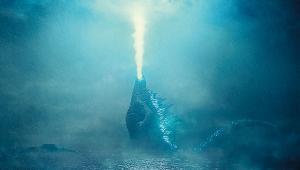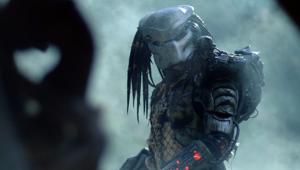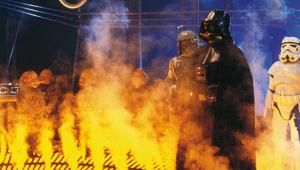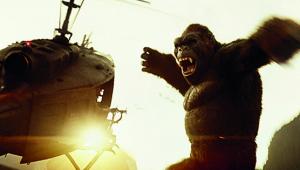The Blu-rays that will really test your system!
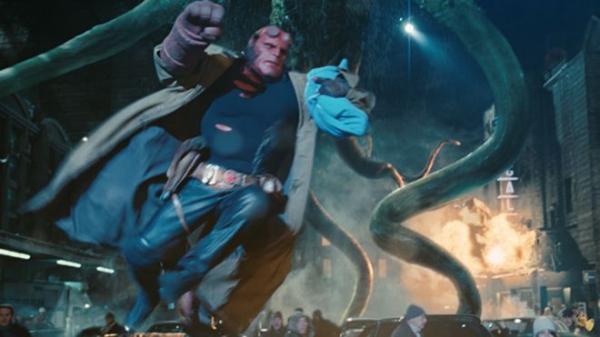
A great demo sequence can help separate a good speaker system – or hi-def display – from a mediocre one. With that in mind, Home Cinema Choice's expert reviewers Danny Phillips, John Archer, Steve May, Richard Stevenson and Adam Rayner reveal the Blu-ray discs they use to put new AV equipment to the test…
Hellboy 2: The Golden Army
Hellboy vs. the Elemental
Guillermo del Toro is lauded for his baroque, inventive visuals, but his movies are often a master-class in sound design, too. Nowhere is this more evident than in 2008's Hellboy II: The Golden Army.
Best of all is the scene where Hellboy battles an Elemental, an enormous plant unleashed by Prince Nuada. After Nuada tosses a bean down the drain, there’s a moment's silence before the Elemental bursts from the ground (58:04). This is a superb test of your speakers’ ability to handle dynamic shifts – the sudden explosion should sound fast and aggressive, jolting you out of your seat.
The Forest God rises up, sending cars plummeting to the ground in a flurry of crisp tinkling glass and heavy bass thumps, then sends out a piercing roar (59:13) that can sound harsh on poor systems. It then crushes a car with its tentacle – revealing more about your speakers’ detail reproduction – and hurls it at a helicopter. The chopper gives out a high-pitched wheeze that can also sound terrible through dodgy drivers.
When the Elemental stomps down the street and Hellboy hops from car to car (59:48) your subwoofer steps up to the plate. It should make the footsteps sound deep and taut, conveying the size and scale of this towering beast. Listen out for bloatedness and overhang – and for the panicked voices emerging across the soundstage. At 1:00:12, a car rolls down the road, moves from the front right speaker to the rear right, demonstrating your system’s tonal uniformity and the quality of your receiver’s steering.
The breathtaking battle is over at 1:02:41 when Hellboy delivers a killer blow to the Forest God’s head. The gunshot should possess top-end bite and slam in the low frequencies. [Danny Phillips]
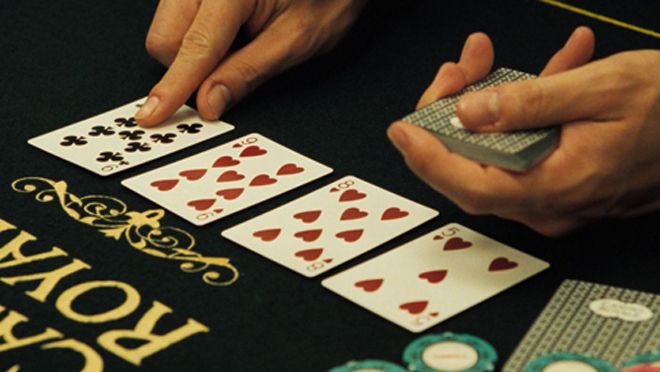
007 plays his cards right
My favourite ‘go to’ sequence in classic test disc Casino Royale is the first proper poker game, which kicks in during Chapter 9, from 1:09:10 to 1:17:11.
This sequence starts with a swift tracking, panning shot of Bond walking through the casino lobby, and this will instantly reveal any shortcomings – twitches, lagging, blocking – in a TV or projector's motion processing engine.
The real fun begins, though, as Bond enters the main gaming room. The following card game sequence is heavily infused with an unusual orangey-yellow tone derived from the décor of the room. This tone is difficult to make look natural; on some TVs the walls and carpets of the gaming room appear too yellow, sometimes even seeming to glow a bit, and are thus too prominent in the colour mix. It’s also interesting to see how well a TV handles the areas of rich stand-out colour – gambling chips, red roses, the hearts and diamonds on the cards – in this sequence. A really good display will make sure these bold colours are rendered so that they feel in balance with the rest of the image, rather than ‘popping out’ too much.
The biggest challenge of all in this scene, however, is skin tone. Surprisingly many TVs struggle to get any of the skin tones in this scene right, leaving them looking too yellow around the gills, as if they’re somehow merging with the casino walls.
One final issue is that TVs with insufficient colour processing can suffer with some weird blocking and speckling noise over foreheads and cheeks, while others can flare out – losing almost all colour information – at the points where skin is most directly struck by the room’s lighting. Later in the movie, Bond is strapped to a chair and tortured. But this scene is the torture test for your TV. [John Archer]
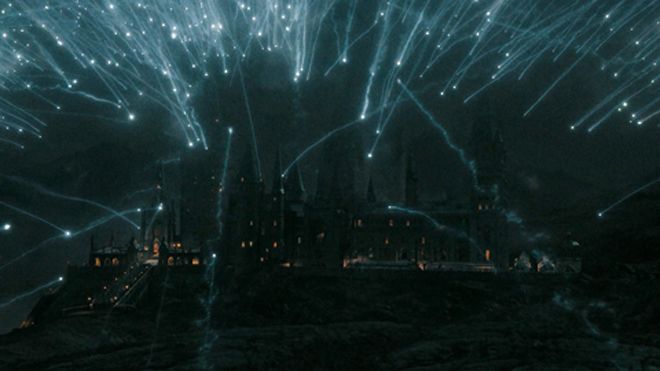
Voldemort harasses Hogwarts
The whole of this Blu-ray feels like it was deliberately designed to give TVs and projectors a hard time. But there’s one sequence in particular I return to frequently, beginning exactly at the start of Chapter 12 (45:52).
It starts with a high aerial shot at night showing Voldemort’s army on a hilltop. Or at least that’s what it’s supposed to show; some TVs’ black level response is so bad you'll struggle to see any information in this image at all.
The camera circles around, providing a stiff test of a screen’s motion resolution and anti-judder processing. It’s common to see smearing, softness, judder and blocky, flickery motion processing artefacts in this shot.
The intense darkness also highlights any problems an LCD TV might have with backlight clouding (areas of the picture that look unnaturally brighter than others). Soon after this opening shot, bright spells are fired at Hogwarts, creating a sudden shift in brightness that can cause poor-quality dynamic contrast systems to flicker and flash.
Next we cut to Harry chatting to the ghost of Helena Ravenclaw. This very, very grainy sequence really works out a TV’s noise handling and noise reduction systems. It also features tricky low-lit skin tones on the young wizard, which can look pasty or waxy on TVs with poor contrast or inadequate colour processing. Plus its swirling cameras and bold light and dark contrasts challenge local dimming systems, highlighting any issues they may have with light ‘blocking’ around bright image elements.
Add in the extremely fine detail in Harry’s cardigan and the background walls that poorer flatscreens either render with a nasty glowing effect or not at all, and in just three minutes – the sequence finishes at 48:55 – you’ve got a solid handle on how good a TV/projector is. Or, at least, whether it's set up properly. [John Archer]

Picking a path through destruction
The recent sci-fi smash Gravity is fantastic, but for me the dystopian Children of Men is still director Alfonso Cuarón’s masterpiece. Its sparse, chilling sound design serves as a precursor to his space-bound Oscar grabber, and the final-act scene in which Theo (Clive Owen) and Kee (Clare-Hope Ashitey) make their way through the Bexhill Refugee Camp in the midst of a bloody uprising is nothing short of astonishing. This seven-odd minute sequence (seemingly one continuous take) is all about detail, steering, dynamism and a 360-degree soundfield.
Skip to Chapter 17 and right off the bat the entire soundstage is peppered with gunshots, testing out the transient response of your speakers (1:24:01). Decent drivers will make them pop and snap with a crisp leading edge.
After Luke (Chiwetel Ejiofor) takes Kee, Theo ducks for cover from some frighteningly real gunshots inside an old bus, where bullets shatter the windows and give your tweeters something to get their teeth into (1:26:50).
At that point a tank trundles into view (1:27:16) and blasts the entrance to the adjacent tower block, while a group of surrendering refugees are mercilessly mown down (1:27:37). This is chaotic and brutal – your system should be attacking the bangs and crashes vigorously and pinging them rapidly between channels.
But the real test for your subwoofer comes when an explosion rips out the front of the tower block (1:27:47) – there’s a massive billow of deep bass, accompanied by a crisp crunch as a cloud of debris rains down from above. A well-balanced system will blend these disparate parts together perfectly.
As Theo and Kee make their way out of the tower block during the cease fire (1:31:50 onwards), your speakers can show off their subtlety with the soothing choral voices – but the calmness is soon shattered by yet more explosions.[Danny Phillips]
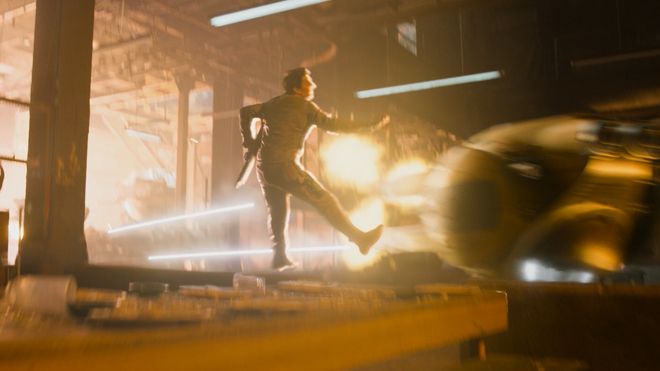
Wraparound sci-fi
Even though 7.1-capable hardware is now commonplace in home cinema, native seven-channel movie mixes remain disappointingly scarce. One glorious exception is Oblivion. The Tom Cruise SF yarn boasts magnificent multichannel sound design and is a great audio system-stretcher; with copious fly-bys and firefights it's a doozy for detailing dynamics, sound steerage and timbre matching.
When the alien drone discovers Morgan Freeman's bunker (Chapter 9), an alarm peels right to left across the front soundstage before the invader flies front to rear left, then almost instantly returns from rear right to centre. This sonic movement should be smooth and consistent, if your speakers are phase matched, and with no gaps in delivery. Then, when the drone is engaged, it crashes into the wall of the bunker and sends out a deep LFE ripple – if the resulting bass pressure doesn't load your room, letting you feel the explosion on your chest, then you need to take a look at your sub.
The drone trio attack in Chapter 16 is a glorious aural cacophony that should place you central to the bedlam. Want to test the effectiveness of those two extra rears? When Cruise is knocked off his feet the drone should fly in directly from the centre backs.
This Chapter will also thoroughly exercise your subwoofer. Olga Kurylenko is cornered (1:39:27) by a drone, which honks deeply overhead. When it’s shot down, there should be a profound low-register thud. Similarly, when the fireball erupts (1:40:21), bass FX should go disturbingly low and linger. [Steve May]

Taking a ride with Flynn Rider
While there's no shortage of 3D movies with sequences able to nobble stereoscopic displays, few do it quite as ruthlessly and efficiently as the Disney animation Tangled.
Indeed, you don't even need to get into the film in order to determine just how adept a screen is in the third dimension – the animated menu itself is enough to bring many a 3D display to its knees. The sequence in question has Rapunzel and Flynn Ryder floating in a boat, watching a castle from afar. Once the Scene Selection menu appears, scores of illuminated lanterns rise into the air and fill the screen. This transpires to be quite the 3D torture test, allowing an assessment to be made quickly and consistently. It’s also an easy trial to stage at home. Load up the platter and look to those lanterns filling the top of the screen – are they shadowed by phantom lanterns created by crosstalk, or do they fly solo?
Chapter 3 (Meet Flynn Rider) is another splendid barometer. This chase sequence has enormous depth, with characters and forest elements depicted on multiple planes (16:20). Is the illusion of depth consistent or does it wander? Is the rocky outcrop to the left clean or shadowed?
Similarly, when Maximus the Horse and Ryder plummet to the Earth (18:24), the fore-, middle- and background ought to distinctly rendered. Watch out for foliage smooshing into the middleground. [Steve May]
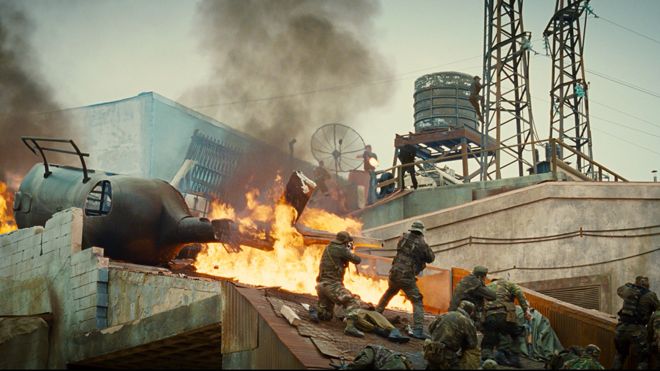
Taking action to new heights
The world’s first BD to have its audio 'optimised' for DTS Neo:X 11.1, The Expendables 2 is about as big, bad and loud as action movies get, and the discrete 7.1 DTS HD-MA audio contains phase-mixed height and width channel information to create a sublime 11.1 audio experience of the most visceral kind.
You need go no further into the disc than the opening sequence to appreciate the scale of the visual and sonic madness either. Throughout the first few minutes the thumping score to the scene in Nepal is pushed through all channels, including the heights, increasing the drama and atmosphere with a wall of sound at the front of your room.
The height channels really come into their own when the team take down a helicopter (05:22). The explosive impact of motorbike hitting chopper is heavily routed to those elevated speakers, pushing the sound high in the room to emulate the sky-bound action. Later, as bullets fly when our intrepid heroes break camp (07:58) ricochet sounds whizz overhead. The heights play a starring role, lifting the effect in the room and giving the scene real three-dimensional presence.
The sound of the whole movie is immersive, although very short on dynamic range – it’s all loud. Still, as a demo of Neo:X and the benefits of height speakers, it’s fun from start to end. [Richard Stevenson]
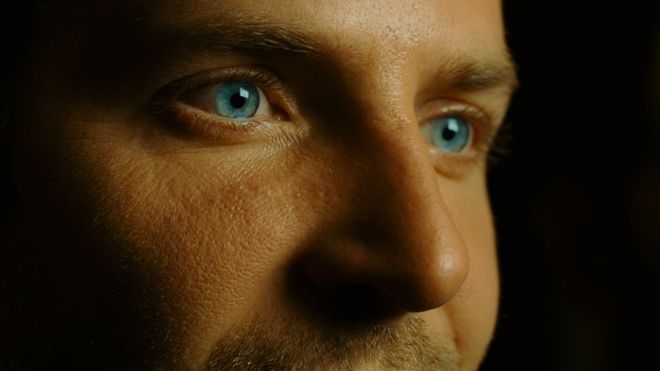
Someone’s at the door!
Some subwoofers are totally bonkers. Ones that make you believe the house is falling down. But power without control is nothing and a good woofer must stop dead as suddenly as it starts explosively.
A fabulous demo sequence to reveal this can be found at the beginning of the Bradley Cooper sci-fi flick Limitless. No time stamp necessary – just whack in the disc and press play. Our hero is atop the parapet of a fortress-like apartment, while a Russian gangster smashes his way through the door. He might be about to jump...
This starting sequence, from the very first frames, is crescendoic and explosive. Bam. Bam. BAM! The LFE is metallic and deep and hard, it repeats louder and louder and has as large a rise time as I have ever heard or felt. There are other superb subwoofer tests around, from the prairie thunder roll in No Country For Old Men to Tom Cruise tumbling into the underground cavern in Oblivion, but this is one I return to again and again. [Adam Rayner]

It’s Miller time!
Undoubtedly one of the best- produced multichannel Blu-ray discs for music, Legends of Jazz Showcase could turn a Death Metal fan onto sax and bass tunes. Coming off the disc in uncompressed Dolby TrueHD as a native 5.1-channel mix, the recording’s clarity and heavy use of centre and surround channels makes for a thoroughly engaging sound with spatial imaging that no two-channel music replay system will ever manage.
Bass guitar supremo Marcus Miller opens the track The Panther with some subtle plucking and noodling of his fret board (09:40). It’s a warm sound, rich with detail and realism. There's tangible presence and anticipation from the audience revealed in the finest detail through the rear channels. The gentle slides and dynamic string plucks give you big clues to the sound to come.
You hold your breath in anticipation, give the volume knob another tweak upwards, and Miller lets rip with a slap bass riff (10:01) that delivers pure funk with realism and power. Each slap is lightning-strike quick and delivered with hammer-weight punch. A few seconds later (10:06) the crisp sound of the drums kick in with breath-taking dynamic attack. The leading edge of the snare is taut and vicious, backed up by an enormous bass drum beat. It is a thorough system workout, from the lowest frequencies to the highest, in the space of 10 seconds and leads cleanly into a track so rich and mellifluous that you could be right there in the audience with a Martini and fat cigar.
Stereo music fans skeptical of 5.1 need to hear this... [Richard Stevenson]
 |
Home Cinema Choice #351 is on sale now, featuring: Samsung S95D flagship OLED TV; Ascendo loudspeakers; Pioneer VSA-LX805 AV receiver; UST projector roundup; 2024’s summer movies; Conan 4K; and more
|



